The baby’s diaper should be changed whenever it is dirty, or at least every three or four hours after the end of each feeding, especially in the first 3 months of life, because the baby normally poops after feeding.
As the baby grows and breastfeeds less at night, it is possible to reduce the frequency of diaper changes, especially at night to ensure that the baby can create a sleep routine. In these cases, the last diaper must be changed between 11 pm and midnight, after the baby’s last meal.
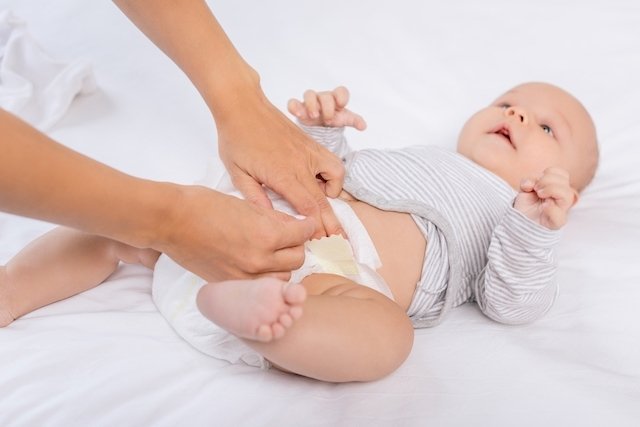
Material needed to change the diaper
To change your baby’s diaper, you must start by gathering the necessary materials, which include:
- 1 clean diaper (disposable or cloth);
- 1 basin with warm water
- 1 towel;
- 1 trash bag;
- Clean compresses;
- 1 diaper rash cream;
The compresses can be replaced with pieces of clean tissue or wipes designed to clean the baby’s bottom, such as Giving or Huggiesfor example.
However, the best option is always to use compresses or tissues, as they do not contain any type of perfume or substance that could cause allergies on the baby’s bottom.
Step by step to change the diaper
Before changing your baby’s diaper, it is important to wash your hands and then:
1. Remove the baby’s dirty diaper
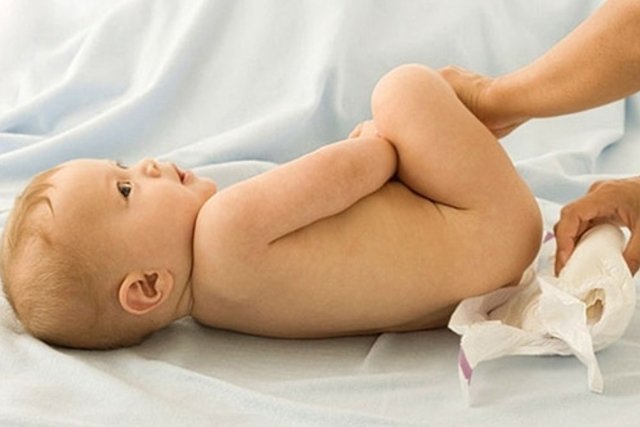
- Laying the baby on a changing tableor a clean towel on a firm surface, and only remove the clothing from the waist down;
- Open the dirty diaper and lift the baby’s bottom, holding it by the ankles;
- Removing poop from baby’s bottomusing a clean part of the dirty diaper, in a single movement from top to bottom, folding the diaper in half underneath the baby with the clean part up, as shown in the image.
2. Clean the baby’s intimate area
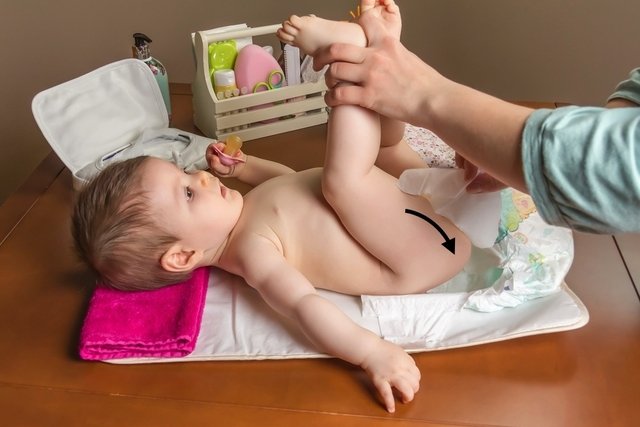
-
Clean the intimate area with the compresses wet in warm water, making a single movement in the direction from the genital to the anus, as shown in the image;
- In girls: it is recommended to clean one groin at a time and then clean the vagina towards the anus, without cleaning the inside of the vagina
- For boys: start with one groin at a time and then clean the penis and testicles, ending with the anus. You should never pull the foreskin back as it can hurt and cause cracks.
- Throw each compress in the trash after 1 use to avoid soiling areas that are already clean with feces;
- Dry the intimate area with a towel or cloth diaper.
3. Putting a clean diaper on the baby
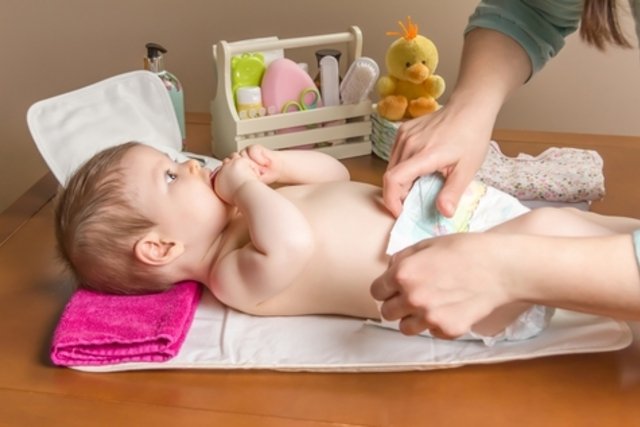
- Putting on a clean diaper and open under the baby’s bottom;
- Apply diaper rash cream, if it’s necessary. In other words, if the butt or groin area is red;
- Close the diaper fixing both sides with adhesive tape, leaving it below the umbilical stump, if the baby still has it;
- Wear the outfit from the waist down and wash your hands again.
After changing the diaper, it is recommended to check that it is tight to the baby’s body, but it is also recommended that you can place a finger between the skin and the diaper, to ensure that it is not too tight.
How to put a cloth diaper on your baby
To put a cloth diaper on your baby, you must follow the same steps as for a disposable diaper, taking care to place the absorbent inside the cloth diaper and adjust the diaper according to the baby’s size.
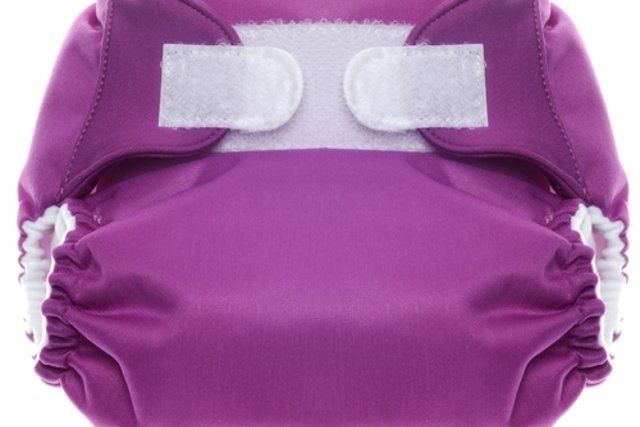
Modern cloth diaper with velcro
Modern cloth diapers are more ecological and economical because they are reusable, although the investment is greater at the beginning. Furthermore, they reduce the chances of diaper rash in the baby and can be used on other children.
How to avoid diaper rash on your baby’s bottom
To avoid possible butt rash, also known as diaper dermatitis, it is important to follow some simple tips such as:
- Change the diaper frequently. At least every 2 hours;
- Clean the baby’s entire genital region with compresses moistened with water, and avoid using wet wipes, as they contain products that can encourage diaper rash to develop in the baby. Use them only when you are not at home;
- Dry the entire intimate area very well with the help of a soft tissue, without rubbing, especially in the folds where moisture is concentrated;
- Apply diaper rash cream or ointment at each diaper change;
- Avoid using talcum powder, as it promotes diaper rash in babies.
Diaper rash on a baby’s bottom is, in general, temporary, but can develop into a more serious situation, presenting blisters, cracks and even pus if not treated correctly, which is why it is important to know how to avoid and treat diaper rash.
How to stimulate your baby’s brain during the change
Diaper change time can be a great time to stimulate the baby and promote his intellectual development. To achieve this, some activities you can do include:
- Hang an inflatable balloon from the ceiling, low enough so that you can touch it, but not within the baby’s reach, causing the ball to move from side to side while you change your baby’s diaper. He will be fascinated and will soon try to touch the ball. After he finishes changing the diaper, pick up your baby and let him touch the ball by playing with it;
- Talk to the baby about what you are doing when changing the diaper, for example: “I’m going to take off the baby’s diaper; Now I’m going to clean your bottom; Let’s put on a new, clean diaper so the baby smells good.”
It is very important to do these exercises from an early age and every day with at least one diaper change to stimulate the baby’s memory and so that he begins to understand what is happening around him.




